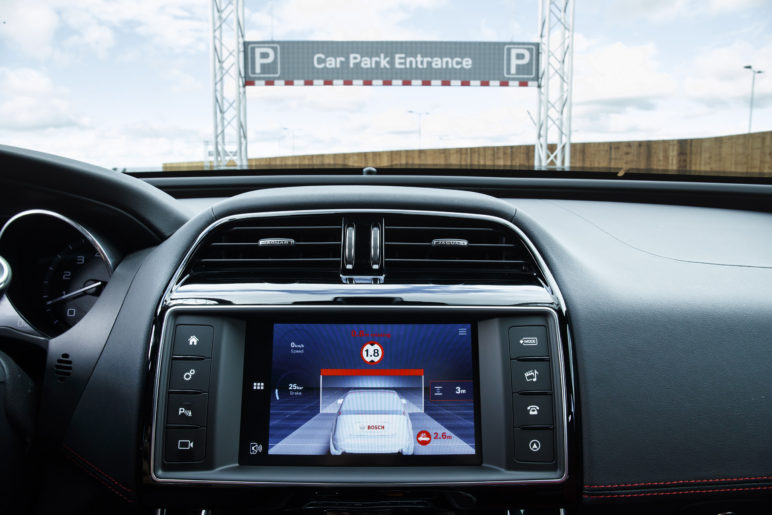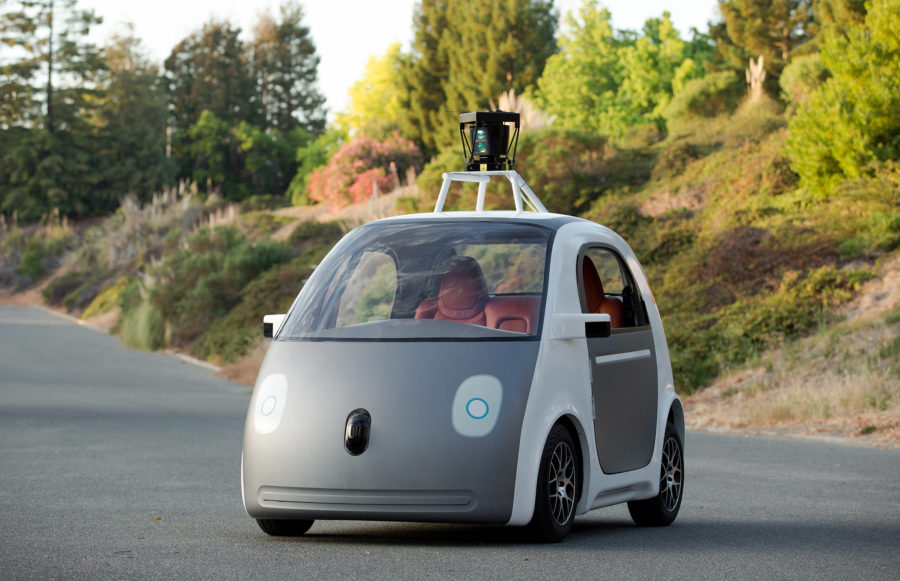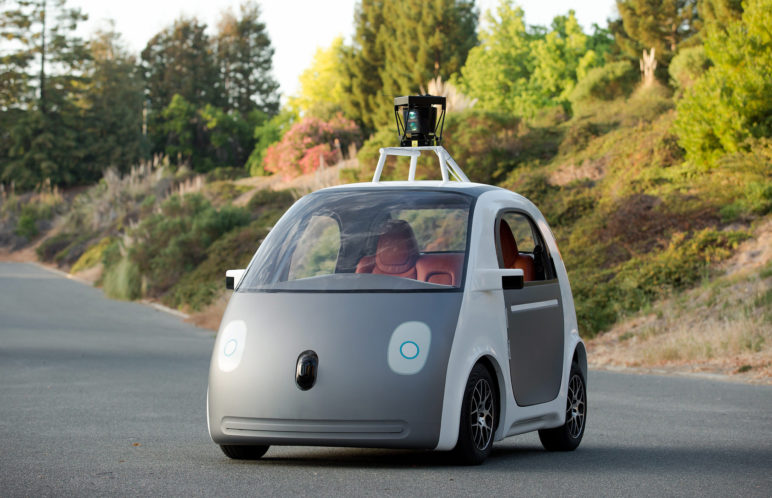In part 1, I laid out the immense potential for good that Transportation as a Service (TaaS) offers. A future where most private cars give way to taxi rides provided by fleets of smart, autonomous, electric vehicles would be good for our health and safety, our pocketbooks, our economic competitiveness, our climate, and our local environment. But this promise comes with certain risks. They’re avoidable, but not without effort. Today: the pitfalls of TaaS and how Cascadia can drive around them by adopting the right policies now.
Disruptions and downsides
Shifting from personally owned vehicles to self-driving electric car services could have several negative impacts:
- Lost jobs. Autonomous electric vehicle fleets would eliminate the jobs of people who drive for work as well as many parts of the existing automotive and petroleum supply chains. In the last 100 years, we’ve seen this kind of workforce turmoil before as the application of new technology substantially increased labor productivity in agriculture, manufacturing, and some services. Whatever their broad societal benefits, these changes have landed hard for people who lose their jobs and can’t make a shift to the growing areas of the economy. The rise of artificial intelligence applied to driving and a wide range of other jobs has prompted new fears that this wave of technological change could be different and create long-term unemployment in ways that past disruptions did not.
- More power to the Frightful Five. There is also concern about big technology taking over yet another aspect of our lives. Farhad Manjoo in a series of articles in the New York Times has written compellingly about the scope and influence of the Frightful Five: Amazon, Apple, Google, Facebook, and Microsoft. Do we really want to add driving to the list of personal activities mediated by such companies?
- Increased congestion. Cutting the cost of transportation by two-thirds means people will consume more of it, which could result in increased congestion and sprawling urban development.
- Lost tax revenue. We pay for our roads with gas taxes that could quickly disappear with rapid electrification. It’s already happening. So we could have increased use of the roads and less money to maintain and improve them.
Do these disruptions and potential downsides mean we should fight TaaS and intentionally lag as a region, rather than lead? The mobility, environmental, and social benefits from autonomous electric vehicle fleets are too big to pass up. Moreover, with the right public policies, we can mitigate the worst of the disruption and avoid the most serious downsides.
Cascadian governments will need to set the rules of the road
The people of Cascadia collectively own the roads and highways, and our governments already have established laws that prohibit unsafe vehicles, collect fees for road use, and enforce rules for safety and integration with the built environment. They can do the same for autonomous electric vehicle fleets.
The interests of TaaS companies and local governments are fairly well aligned insofar as rapidly expanding TaaS will reduce costs and reduce pollution compared with the current oversized, over-polluting fleet of space-hogging internal combustion-powered private vehicles.
But their interests are not perfectly aligned. TaaS companies may try to push technology into service before it is ready, skirt liability, limit competition, not share data with the public, and target higher-income riders, leaving low-income, elderly, and disabled Cascadians to fend for themselves. To seize the benefits and minimize the downsides of TaaS, policymakers can create regulations that protect the public interest and create the conditions to enable TaaS.
The City of Seattle recently released its New Mobility Playbook. It sketches the policies needed to ensure these technologies serve the public interest. The first two “plays” set the tone:
- Ensure new mobility delivers a fair and just transportation system for all.
- Enable safer, more active, and people-first uses of the public right of way.
More “plays” (and with more detail) provide a game plan to move Seattle forward. As part of the Playbook, Seattle developed a draft policy framework and a list of regulatory considerations that point towards the proper balance of public and private interests. Seattle, Portland, Vancouver and other urban centers now share information on this topic and suburban cities such as Bellevue, Washington, that depend mostly on cars for mobility, have taken their own steps to accelerate the shift to autonomous vehicles.

Jaguar Land Rover plans to create a fleet of more than 100 research vehicles over the next four years, to develop and test a wide range of Connected and Autonomous Vehicle (CAV) technologies. by Jaguar MENA used under CC BY 2.0
A new transportation vision
No one knows exactly how quickly TaaS technology will be ready but, if GM, Waymo, and other companies keep to their schedules, some urban areas will see large-scale pilots in 2019 with more to follow. Dramatic disruptions have already begun, and drifting along without a destination in mind would squander big opportunities. A modicum of steering can put Cascadia on the right track.
The impending arrival of TaaS has big implications for policy in 2018:
- Prepare for large-scale pilots. State and local governments can start now to set the conditions to make cities in Cascadia attractive to TaaS companies. Clarity on regulations, liability, and policy objectives for pilots will accelerate their deployment. Structuring pilots with multiple service providers, as Seattle has done with its floating bicycle share program, will ensure that no single TaaS provider gains the upper hand and limits competition. Identifying potential fleet charging sites with adequate electric utility capacity would remove a potential barrier for TaaS companies.
- Reduce parking requirements. The arguments for removing regulations for new buildings to provide off-street parking were already strong. Those arguments get even stronger when we consider how TaaS technology could reduce the need for parking. Why require off-street parking in new buildings that will likely spend most of their lives in the TaaS era, not the private-car era?
- Redirect road budgets. TaaS could make much-more efficient use of existing highway infrastructure, because autonomous vehicles can travel faster and closer to each other than human-operated vehicles. Billion-dollar highway expansions make little sense if our future is TaaS. Instead, we can focus on better maintaining existing roads and bridges and making space for all types of road users.
Once the region moves beyond the pilot stage, the framework for a sustainable transportation future with TaaS includes:
- New city ordinances. Cities and towns need to rethink policing, public safety, street and sidewalk use when a significant share of trips are delivered by TaaS and establish common ordinances that apply broadly across Cascadia’s metropolitan regions.
- A shift to road pricing. Free roads plus autonomous vehicles could be a recipe for gridlock. We know that congestion pricing promotes more efficient use of expensive highway infrastructure. Variable pricing by time of day and location could reduce the congestion from autonomous fleet vehicles and provide a revenue source for maintaining roads and improving the equity of our whole transportation system. Consumers have already adapted to surge pricing from Uber and other ride-hailing companies. With average transportation prices going down in the TaaS model, higher peak-period prices could find public acceptance. It may prove politically easier to charge TaaS companies for road use based on congestion than it has been to charge individual drivers: transportation planners and economists have been recommending congestion pricing for decades, but it’s been implemented only rarely, because people do not like to pay for what they’re used to getting for free. But in a TaaS future, congestion pricing and other road-use charges will be politically more like the fees and taxes buried in your phone bill—unseen and politically uncontroversial. Besides, if surge pricing is coming anyway, shouldn’t the public get its share of the proceeds?
- Attention to equity. Low-cost service from electric fleet vehicles could offer another way to advance climate equity for the region’s most vulnerable populations. By generating more savings as a share of income for low-income households and reducing their exposure to financial risk, TaaS could move the needle on financial security for vulnerable households. To ensure equitable outcomes, Cascadian governments need to determine how to regulate autonomous fleets in a way that protects and expands affordable and reliable transportation options for vulnerable populations, rather than blithely allowing TaaS companies to only serve higher-income riders in affluent urban areas.
- A path for displaced workers. By using some of the savings from reduced driving costs to help displaced workers find pathways to new jobs in growing parts of the economy, we can also proactively address the economic dislocation from this wave of technology. Now is the time to start learning from past efforts and identifying the retraining programs that really work.
- Updated investment plans. Public and private owners of buildings and infrastructure will need to adjust their capital spending plans as the promise of TaaS becomes a reality. Shrewd owners will revisit their assumptions about future demand for parking, road use, and transit trips and update their investment plans accordingly.
Cascadia’s transportation future likely includes a huge role for fleets of autonomous electric vehicles providing emission-free, low-cost mobility in cities that will become yet friendlier to pedestrians and cyclists and people of all ages and abilities. But Cascadia’s leaders will need to guide the region toward that future. The region will not steer itself to that future automatically.











Rick Mohler
Another great piece. Keep ’em coming. My only comment is that downside #4 is perhaps the easiest to remedy. We’ve discussed using GIS technology to tax individuals for road usage by the mile for some time but it’s raised privacy concerns. However, taxing a mobility service provider by the mail takes that issue off the table.
Arthur Towers
We in Cascadia need to do better by the truckers, delivery drivers, cabbies, and shuttle bus drivers than we did by the timber workers. Many of these jobs pay decently and some have good benefits AND do not require a college degree. We can see this coming. Now is the time to make a plan. My sense is that the cost of the devastation in these sectors should be borne by the manufacturers of the vehicles. They are investing tens of billions, maybe hundreds of billions in the race to be first to market. A sliver of that investment should be made in the displaced men and women who will be the losers in this technological switch.
Further, in the race to be first, the incentive to cut corners on safety is incredibly high. There is also a downside for individual companies and for the industry as a whole to have a series of crashes, hacks, failed patches, etc.
I don’t trust the Trump Administration on safety very much. It will be up to Cascadian governments to establish the proper liability framework to hold those who hurt or kill people accountable for their actions.
David Spahr
All of this will strip us of freedom. No more Sunday drives, dropping in on friends, back roading, four wheeling, antiquing, shopping etc. etc. Pretty much useless in the country. Probably won’t be picking up lumber. Traveling around will be less than car payments? Don’t bet on it. Then there will be the waiting and waiting. No problem though because you will be even more glued to your phone and it will know everything about you. What you know, want to know, buy, wish, where you go etc. It will tell others. You won’t even know you’ve had your soul sucked out.
Jeffrey Belt
Hi Daniel, welcome to Sightline!
I found parts 1 & 2 of this article very interesting. I personally have my doubts shared ownership can take off:
– As you point out not just those driving for a living but also in the supply chain (the car manufacturers, salesmen, mechanics, service providers at gas stations) will take a huge hit. All these folks will understandably resist or vote against changes that threaten their jobs.
– The rush hour routine, whether workdays or weekends when many people want to follow almost the same routes at about the same time.
– In the country the distances may be too great and the opportunities to share vehicles or rides may not make sense anymore.
– The argument of carrying lumber, or the once-a-year ski trip from Seattle to Whistler, always comes back.
Autonomous fleets do open up opportunities. The car-sharing service we subscribe to for the occasional IKEA trip or late night kid pickup would be usable in the country if the car could drive itself between its parking location and wherever we need it, even if it crawled at 20 mph with blinkers on. Until then the alternatives are unattractive enough (spend the time waiting for the infrequent train to/from the parking location, spending the money for a taxi) that usually we don’t take these trips.
Thanks for the food for thought!